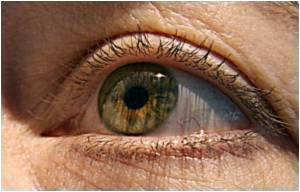
Tests on the retinas of blind mice have shown to radically improve their vision compared to existing microchips.
The scientists said that they have also cracked the code for monkey vision, which is basically the same as that used in humans.
The researchers foresee being able to construct futuristic visors for the blind, similar to those used in the movie 'Star Trek', to enhance the visual abilities of the 25 million people in the world who are suffering from conditions such as macular degeneration and retinitis pigmentosa, which leads to the loss of light-sensitive cells in the retina.
Sheila Nirenberg, a neuroscientist at Weill Cornell Medical College in New York, said that the latest study is a radical improvement on existing attempts to insert bionic eye implants which have only had limited success in restoring vision to the blind.
"It's an exciting time. We can make blind mouse retinas see, and we're moving as fast as we can to do the same in humans. This is the first prosthetic that has the potential to provide normal or near-normal vision, because it incorporates the code," the Independent quoted Dr Nirenberg as saying.
Advertisement
However, these prototype devices, when tested on patients, only manage to produce spots of light or high-contrast edges and don't enable patients to discern the details of a face, for instance.
Advertisement
But Dr Nirenberg's team used an additional approach and have incorporated an intelligent "encoder" that sits between the incoming light and electrode stimulators.
According to the scientists, it is this encoder that can modify the stimulation of the nerves leading from the retina to the brain in a way that accurately reflects the natural visual process of the retina.
Dr Nirenberg explained that the key to the success of their study, was the discovery that the light-sensitive cells of the retina use a type of code, or set of equations, to convert light into the electrical pulses sent to the brain via nerves cells, or ganglia, within the retina.
"Not only is it necessary to stimulate large numbers of cells, but they also have to be stimulated with the right code - the code the retina normally uses to communicate with the brain," she said.
"People had been trying to find the code that does this for simple stimuli, but we knew it had to be generalizable, so it would work for anything - faces, landscapes - anything a person sees," she said.
The encoder consists of a microchip that converts incoming images into streams of electrical pulses. A mini "projector" within the encoder then converts the electrical pulses back into a pattern of light impulses that are used to stimulate light-sensitive proteins within the ganglia cells of retina.
Scientists said that gene therapy technique is used to insert these light-sensitive proteins in to the mouse ganglia, which would also need to be used if human patients are to benefit from the technique.
To test the idea, the scientists built two prosthetic devices attached to mouse retinas, one with the code and one without. The results, and those combined with experiments on laboratory mice, show that the bionic implant enabled blind mice to see visual details, Dr Nirenberg said.
The study was recently published in the journal Proceedings of the National Academy of Sciences.
Source-ANI








